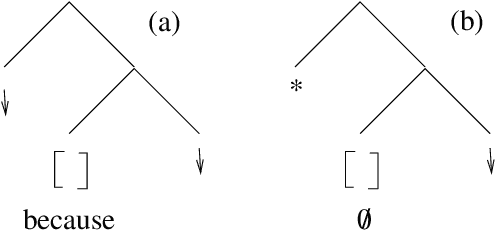Anchoring a Lexicalized Tree-Adjoining Grammar for Discourse
Paper and Code
Jun 24, 1998



We here explore a ``fully'' lexicalized Tree-Adjoining Grammar for discourse that takes the basic elements of a (monologic) discourse to be not simply clauses, but larger structures that are anchored on variously realized discourse cues. This link with intra-sentential grammar suggests an account for different patterns of discourse cues, while the different structures and operations suggest three separate sources for elements of discourse meaning: (1) a compositional semantics tied to the basic trees and operations; (2) a presuppositional semantics carried by cue phrases that freely adjoin to trees; and (3) general inference, that draws additional, defeasible conclusions that flesh out what is conveyed compositionally.
* Proceedings of COLING-ACL'98 Workshop on Discourse Relations and
Discourse Markers. (Reproduced with permission of the Universite de Montreal * 7 pages, uses aclcol.sty
 Add to Chrome
Add to Chrome Add to Firefox
Add to Firefox Add to Edge
Add to Edge